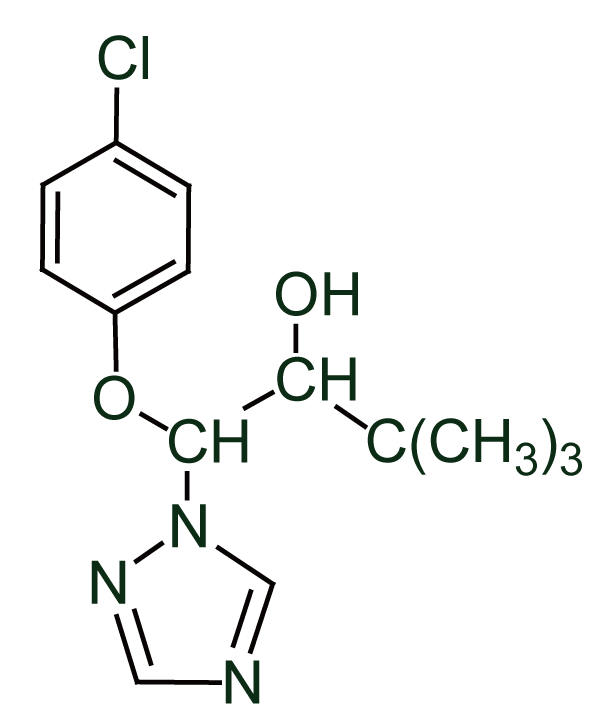- Azoxystrobin
- Bitertanol
- Captan
- Carboxin
- Carbendazim
- Cymoxanil
- Cuprous Oxide
- Copper Hydroxide
- Cyproconazole
- Cyprodinil
- Dimethomorph
- Diniconazole
- Difenoconazole
- Epoxiconazole
- Fluazinam
- Fludioxonil
- Fosetyl-aluminium
- Hexaconazole
- Imazalil
- Iprodione
- Kasugamycin
- Mancozeb
- Metalaxyl
- Metalaxyl-M
- Penconazole
- Propiconazole
- Prochloraz
- Propineb
- Pyraclostrobin
- Thiophanate-methyl
- Tebuconazole
- Tetraconazole
- Tricyclazole
- Triadimenol
- Triadimefon
- Tridemorph
- Trifloxystrobin
Triadimenol
 other name: b-(4-chlorophenoxy)-a-(1,1-dimethylethyl)-1H-1,2,4-triazole-1-ethanol
other name: b-(4-chlorophenoxy)-a-(1,1-dimethylethyl)-1H-1,2,4-triazole-1-ethanol
CAS No.: [55219-65-3]
Molecular Formula:C14H18ClN3O2
Triadimenol provides a systemic activity to control a wide spectrum of seed and soil-borne diseases on wheat and barley.
Michrodochium nivale (seedling blight) and Fusarium foot rots can cause very serious seedling losses and thinning of the plant causing poor crop establishment and significant yield losses. Triadimenol is very effective against this complex of diseases on the
seed. Realise the full potential of crop by getting it off to the right start.
Triadimenol can is used as for seed and soil-borne disease control in winter and spring cereals, and it is broad-spectrum.
APPLICATIONS
Biochemistry
Inhibits gibberellin and ergosterol biosynthesis and hence the rate of cell division.
Mode of action
Systemic fungicide with protective, curative and eradicant action. Absorbed by the roots and leaves, with ready translocation in young growing tissues, but less ready translocation in older, woody tissues.
Uses
Control of powdery mildews, rusts and Rhynchosporium in cereals, and, when applied as a seed treatment, control of bunt, smuts, Typhula spp., seedling blight, leaf stripe, net blotch and other cereal diseases. Also used on vegetables, ornamentals, coffee, hops, vines, fruit, tobacco, sugar cane, bananas and other crops, mainly against powdery mildews, rusts and various leaf spot diseases. Application rates as a spray are in the range 100-250 g/ha for bananas and cereals, 125-250 g/ha protective and 250-500 g/ha eradicative for coffee, 0.0025-0.0125% for grapes, pome and stone fruit and vegetables; application rates as a seed treatment are in the range 20-60 g/100 kg seed for cereals, 30-60 g/100 kg seed for cotton.
Formulation types DP; DS; EC; EW; FS; GR; SC; WG; WP; WS.
GHS complaint Safety Data Sheet (SDS) for commercial product of Triadimenol is available uopn requested.
